In the usual pattern of recent times, falling US yields bashed DXY lower and lifted commodities plus the Australian dollar. DXY up, EUR down:
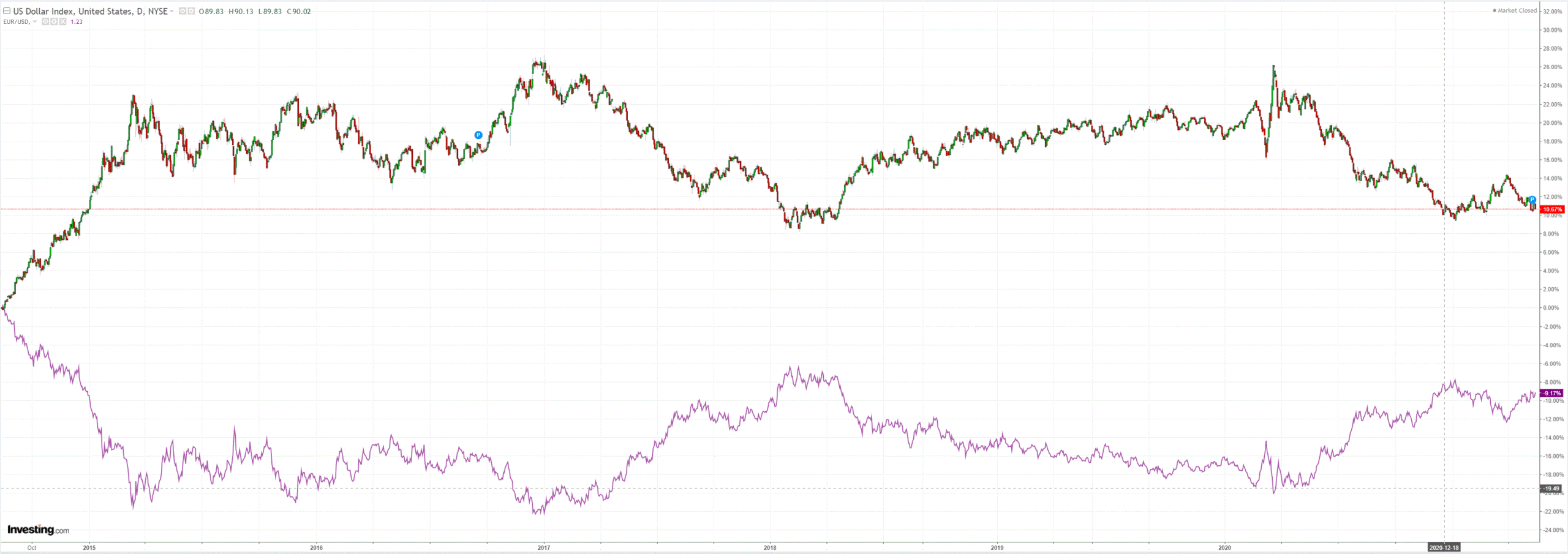
The Australian dollar jumped but it has taken some damage over the past week:
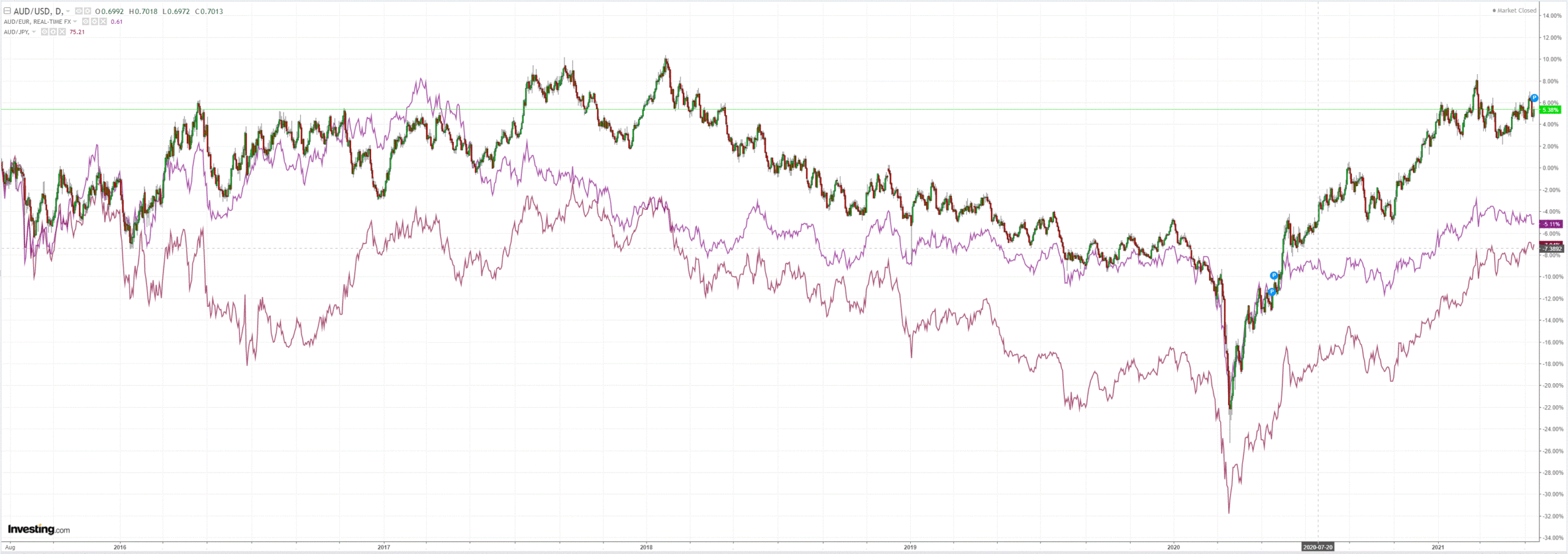
Gold and oil lifted:
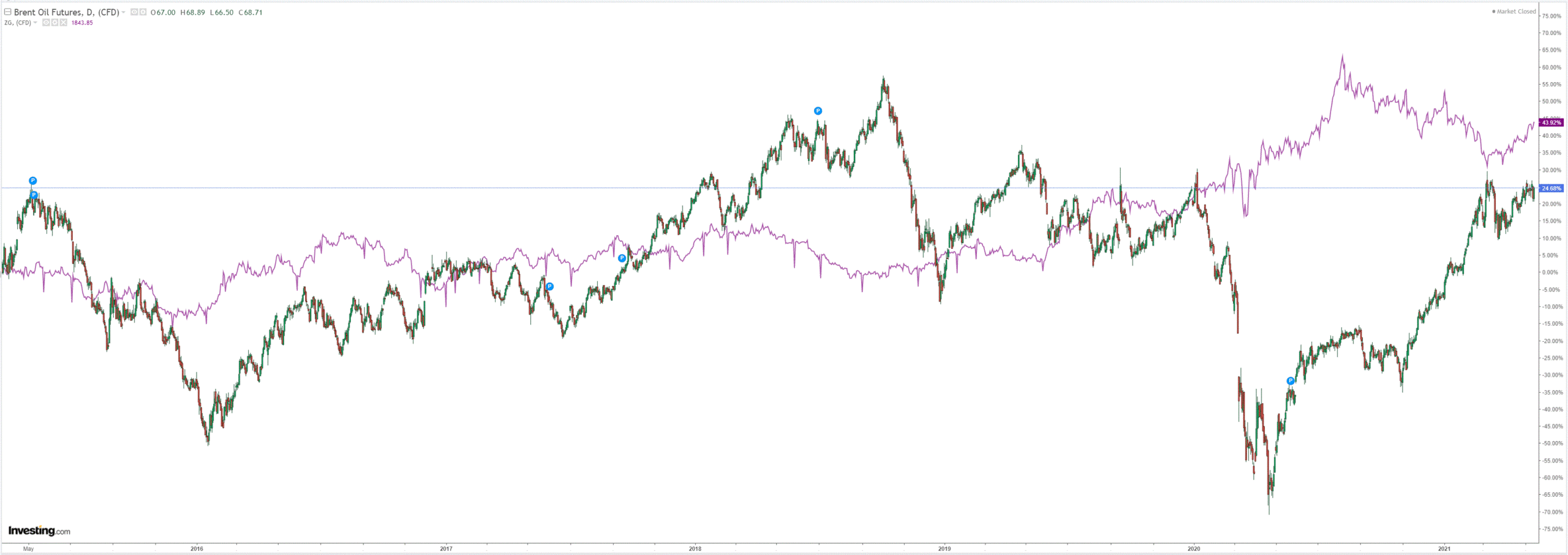
Base metals couldn’t catch the bid:
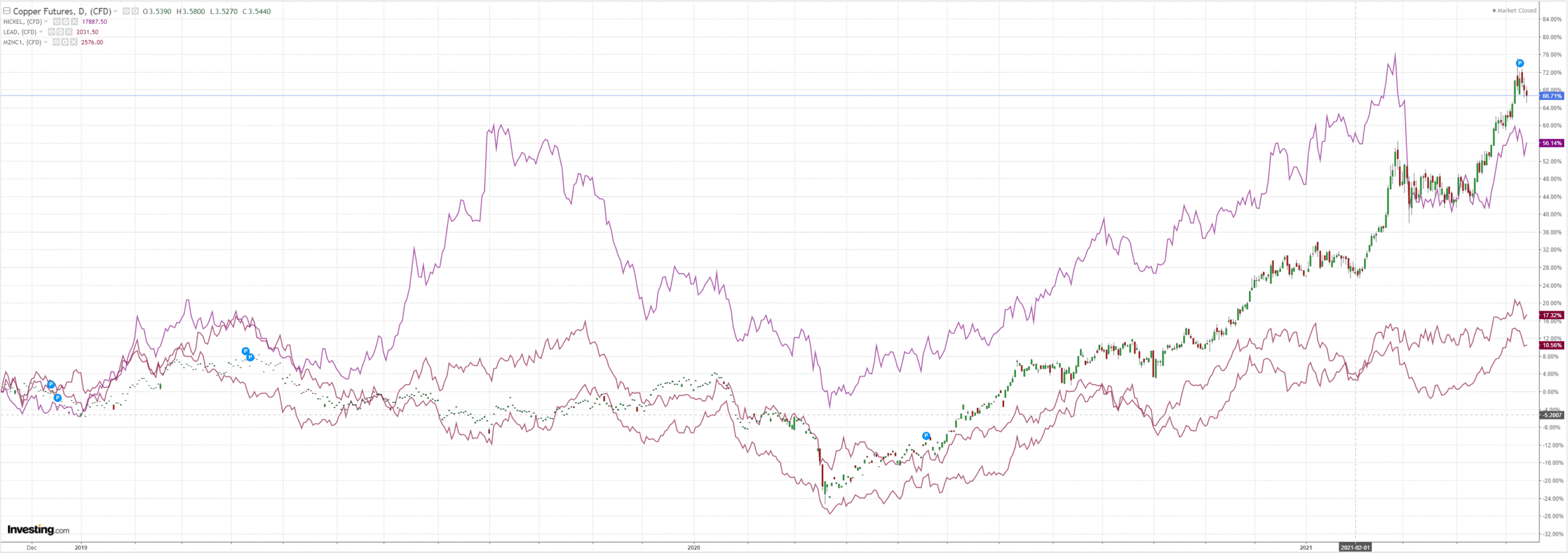
Nor big miners:
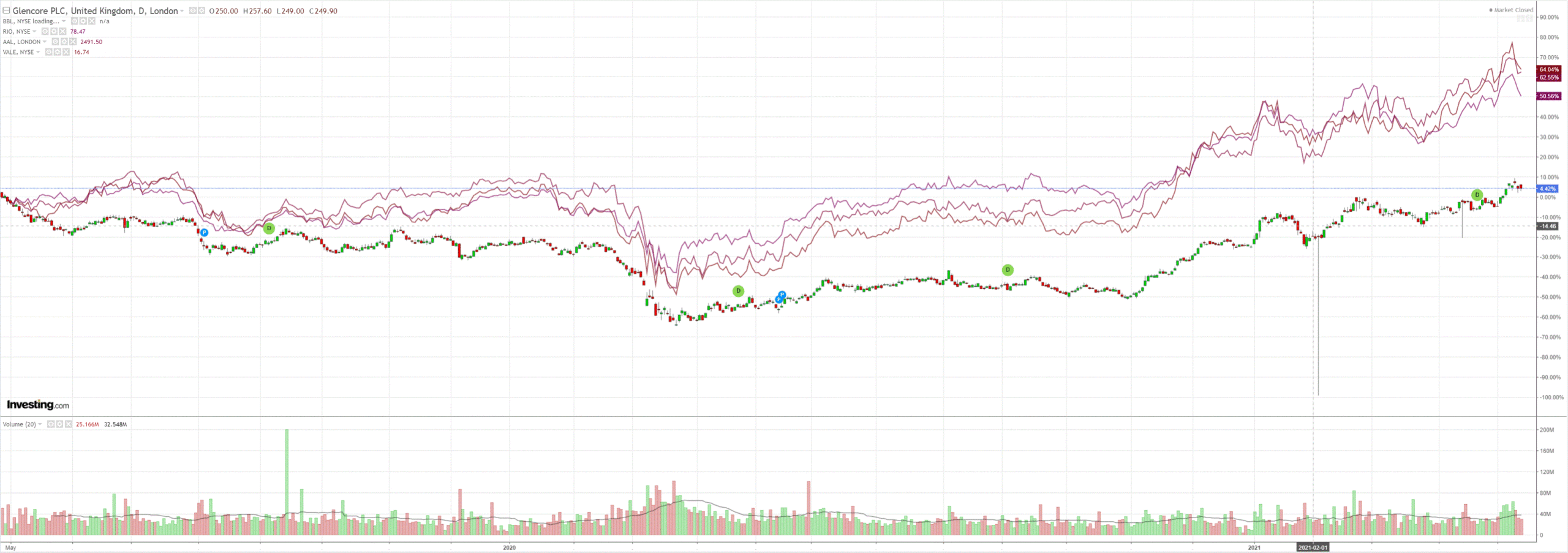
EM stocks danced along the cliff top:
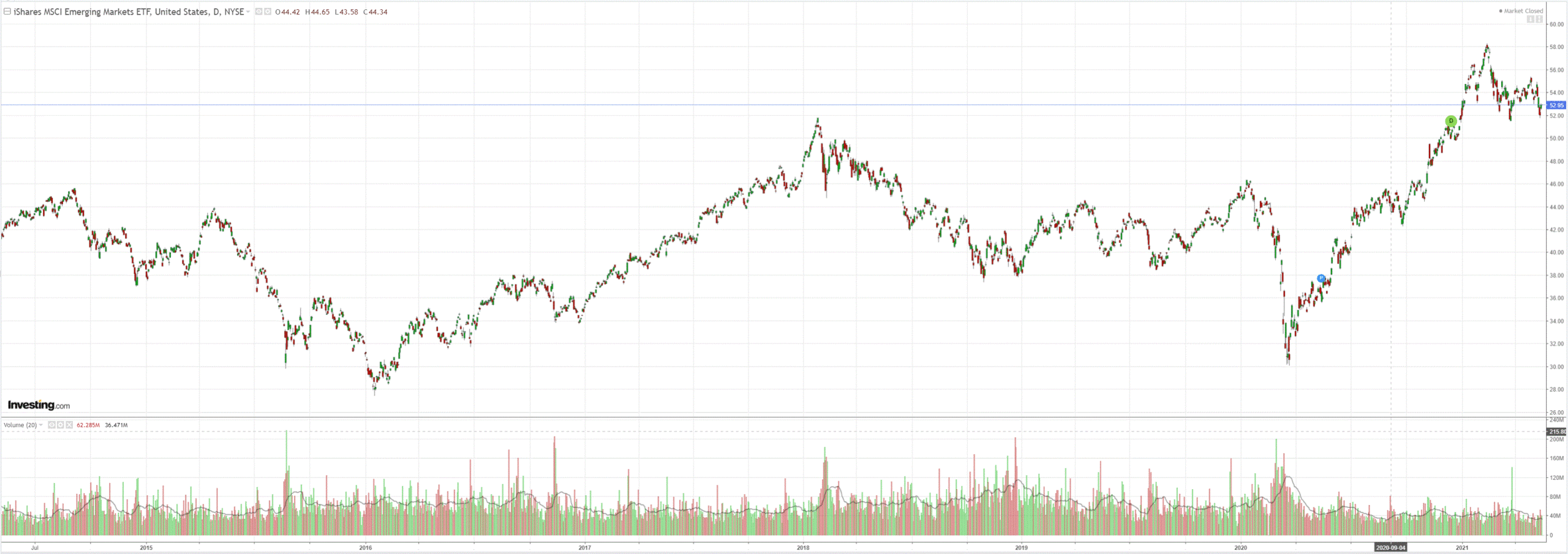
Junk debt was just fine:
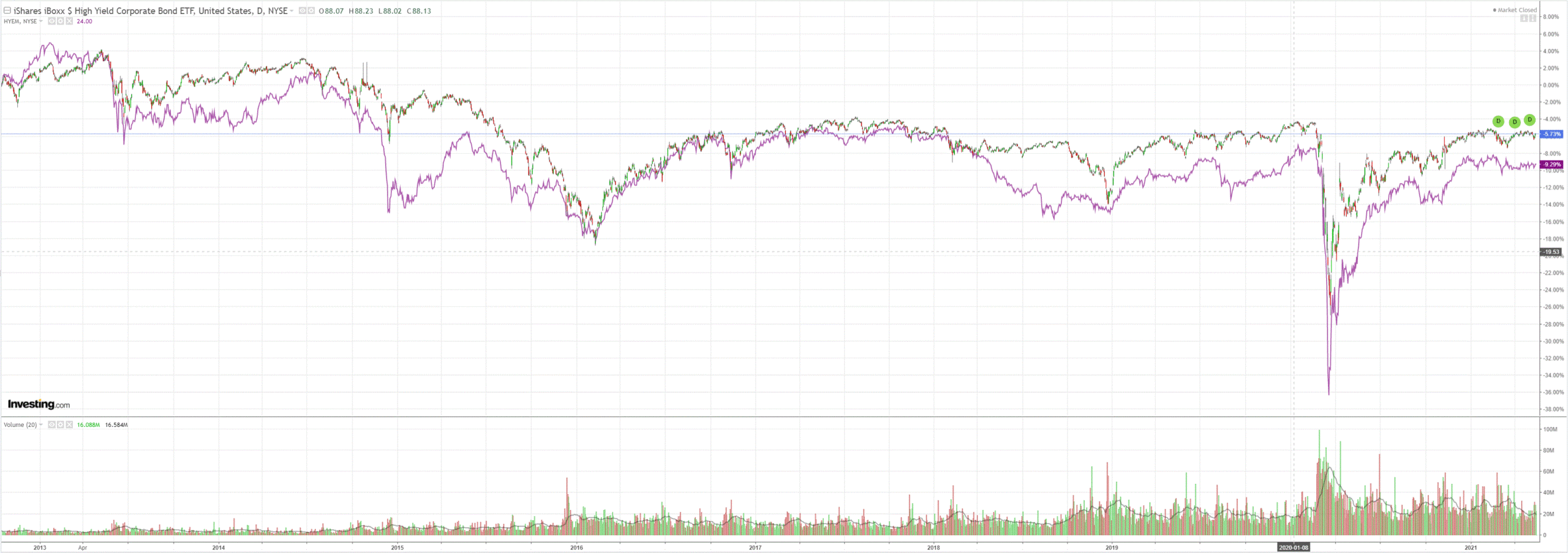
As US yields shook off the week’s inflation panic:
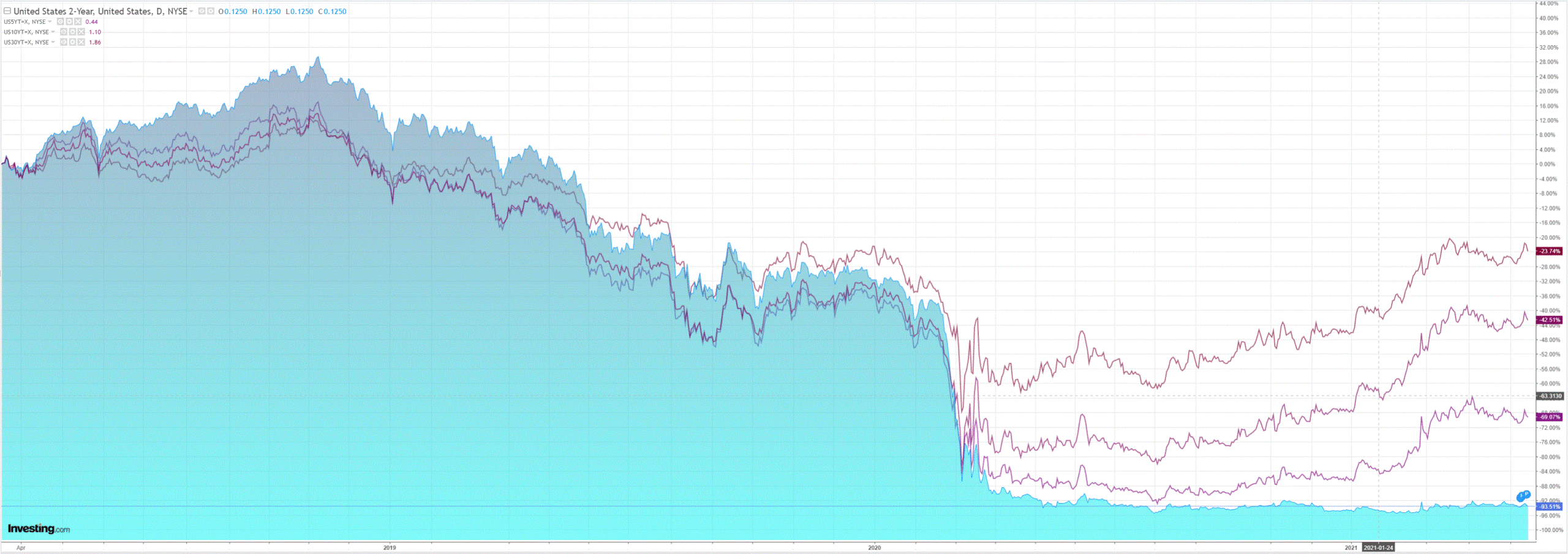
Allowing stocks, especially growth, to rebound:
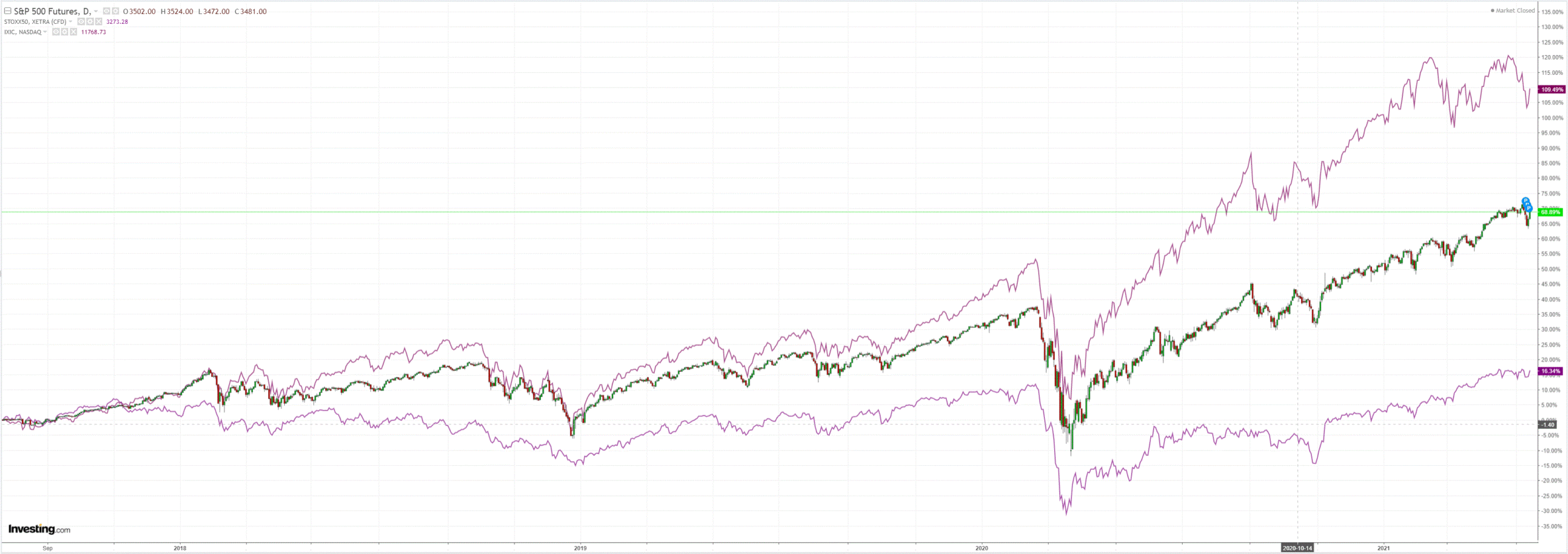
As we move into a new week with DXY falling again let’s take a look at some research that will give USD dollar bears a hard-on. From Bear Traps report:
- The US is entering a “Fourth Turning”.
- A US inflation surge is baked in as the Fed fights inequality.
- Other central banks are more hawkish so DXY will plunge.
- The Fed knows it can’t tighten or it will blow up EMs.
- The great tech bubble will deflate directly into commodity buying.
This strange blend of insight and voodoo may seem out of step with conventional markets. But, the truth is, it is pretty typical of a rising chorus of commodity hysteria sweeping global research.
Readers will know that I entirely agree with the supposition that the next decade will be very different from the last. A have previously laid out my thesis for the great global Balkanisation here.
What is interesting is that where Bear Traps sees the near-perfect circumstances for an endless commodity bull market as DXY falls into a bottomless pit, I see a building DXY bull market and a bottomless pit for commodities.
Today, rather than some Fourth Coming of commodities, I see a normal post-recession cyclical recovery overlaid with COVID distortions. These have created some short-term inflationary bursts that are all going to reverse violently in the next year assuming an ongoing vaccine triumph:
- Supply-side bottlenecks.
- Demand for goods over services.
- China-led stimulus building.
- US labour supply temporarily (if at all) constrained.
- Catch-up growth.
Don’t get me wrong, I agree that we can expect stronger US inflation in the forthcoming cycle versus the last as fiscally-led growth delivers a tighter labour market. And bravo to it. But it will take time to revive structural inflation.
More to the point of this post, the kind of US growth, yield and inflation exceptionalism that is unfolding does not lead to a weak DXY. On the contrary.
Secondly, where is the BT analysis of China? How can one assert that commodities are about to rip skywards from inflated cyclical highs without once mentioning that China is leading the global monetary tightening at the fastest pace in twenty years?
And don’t be fooled that this will lift CNY. It won’t. The tightening is fiscal, regulatory and macroprudential. CNY will fall as yields deflate right along with its construction and commodities economy, leading to massive exports of deflation in 2022.
A fading China and CNY will also pull down Europe and EUR, once past its catch-up phase.
Depending upon how these various forces play out, we could still one more surge in commodities and AUD if Europe recovers faster than China slows.
But the cycle ahead is not something you need to read about in Dead Sea scrolls making reference to mysterious theories of history. It is more simple than that. Contrary to the past two cycles, the US will lead the global cycle with a strong fiscal tailwind, and China will lag as it restructures its dying investment-driven economic model. That means growth, inflation, yield and forex advantage in the former as the latter deflates.
The very same macro set-up drove commodity prices and the Australian dollar into the dirt from 2012 to 2015.

